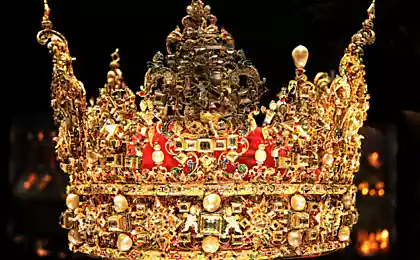512
King Richard III had scoliosis, a hunchback but he was not
Researchers from several British universities, having carefully studied the remains of the king, came to the conclusion that Shakespeare was wrong, describing Richard III as a hunchback and "the curve of the toad".
A group of researchers created a 3D model of the spine of king Richard III (1452-1485), whose remains were found in 2013 in a car Park in Leicester (County Lesterlin, UK).
Forty two million one hundred sixty six thousand two hundred twelve
The work involved experts from the Universities of Leicester, Loughborough, Cambridge and University hospitals of Leicester. The study is published in the journal the Lancet.
The remains of the king, which were hastily buried without shroud and grave, are compelling evidence that Richard III had scoliosis, says Joe Appleby (Jo Appleby), a researcher from the School of archaeology and ancient history at the University of Leicester. The spine is curved to the right of the king, in addition, it is curved in another plane, which gives it a somewhat spiral form.
Ninety three million eight hundred twelve thousand seven hundred forty nine
According to Jo Appleby, the right shoulder of the king was higher than his left and his torso was short compared to the arms and legs. But since the spine was a "well balanced curve" that neck of Richard III were straight, and head held straight, not leaning to any sides. In addition, king was not lame: "the bones of his legs were normal and symmetric".
According to the researchers, who met Richard III for the first time, was not able to observe the condition of his back, especially if he was wearing well-designed clothes or armor. If the king had scoliosis, its growth would have reached approximately 173 centimeters is a normal average height for medieval men. But because of the curvature of the spine it was slightly lower.
The results of the study also show that the scoliosis of the king was not his inherited trait. The disease appeared shortly after Richard III turned 10 years old. Scientists believe that the king was sick "adolescent idiopathic scoliosis", one of the most common types of the disease.
Eighty four million three hundred sixty five thousand nine hundred sixty five
The researchers note that new data does not match Shakespeare's description of Richard III. The poet called the king's "hunchbacked reptile", "the curve, the evil toad", and wrote that he was withered and lame. This is all fiction, said Dr. Phil stone (Phil Stone), the Chairman of the Society of Richard III.
Richard III ruled England in the final stages of the war of the roses. He was the last king of the dynasty of York. At the battle of Bosworth (and as a result of betrayal), he was defeated by Henry Tudor. Historians who lived during the last, probably intentionally maligned the person of Richard III. In addition to external malformations, the latest York attributed the murder of kings Henry VI, Edward V and his brother, as well as the poisoning of his wife Anna, and the murder of his brother, the Duke of Clarence.
Forty one million nine hundred eighty four thousand two hundred eighty four
William Shakespeare wrote his play "Richard III" based on the works of John Morton and Thomas more. Latest wittingly or unwittingly, were "enemies" of the king, so they are suspected of deliberate "slandering" of his personality.
According to the materials RedOrbit ,The Lancet.
Source: nkj.ru























